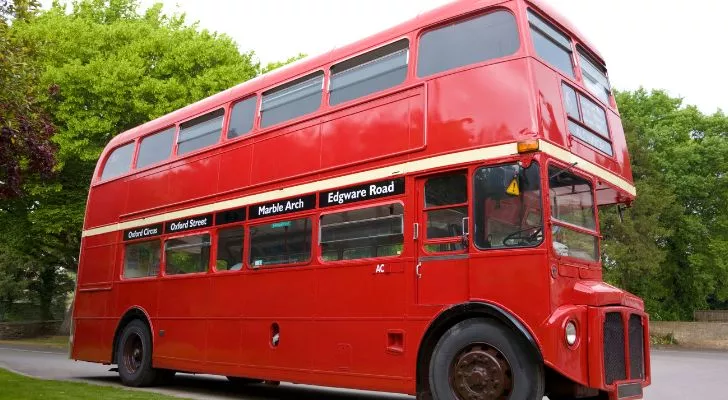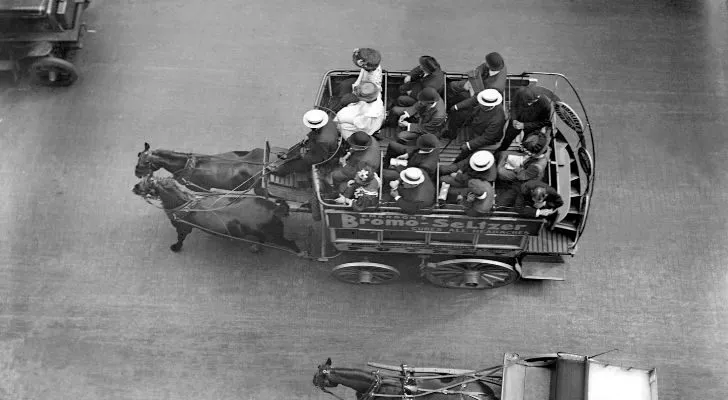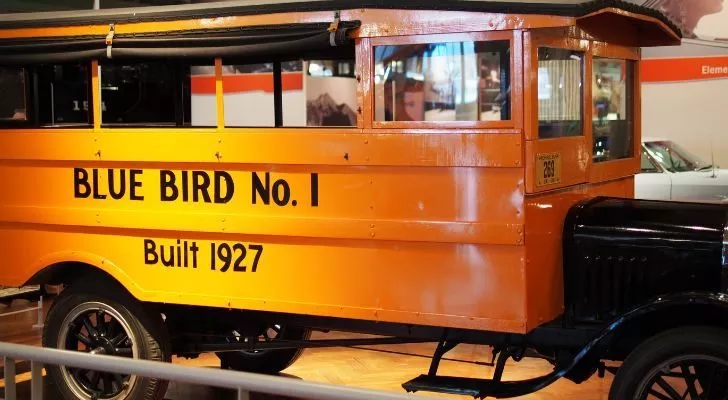I have been on many different buses .....and i fucking hate them .....especislly greyhound buses .....i traveledl form new york...... to florida on a grey hound........... it sucked ass bad ......dirty........ smelly .........filthy ........i would not do it today ....... with all the fucking assholes........ there around ........ i done this many years ago when we had ....... what i thought was decent people.......and with social media ..........and loads of fucking karen's and douchebags ....it would be a nightmare to be trapped in a bus....... with a load of cunts ........they are not a great thing to travel on ......... and now that we have all the fucking diseases...... and idiots around ....no way fucking jose ........
10 Bustling Facts About Buses
The world record for the fastest-ever school bus was set at an incredible 367mph! How? It was powered by a GE J-79 jet engine!

The word bus is short for omnibus, Latin for “for all.” So here are some bus facts “for all” so everyone can know just how exciting buses are!
From how bus routes started out as a failure to why some buses don’t have seat belts, there are tons to feed your curiosity in this article.
So whether you want to live in a school bus or learn about a bus that runs on poop, let’s dive right into ten awesome bus facts!
School buses are yellow as it helps us to read their signage.

School buses weren’t always yellow! Only at a 1939 convention to improve school buses was yellow chosen to be the color we recognize today.
Yellow beat multiple other colors as it was the best color to read the black lettering against in the early morning light.
The United Kingdom didn’t invent double-decker buses.


Subscribe to The Fact Site!
Get updates on the latest posts and more from The Fact Site straight to your inbox.
Double-decker buses are common in the United Kingdom (UK), where they are notable for their bright red color. In fact, they’re so common that they have become an international symbol of the country!
But while the UK is often the first country that comes to mind when talking about double-deckers, France actually introduced this type of bus to the world – in fact, France was the leading pioneer of buses.
The first double-decker buses started out in Paris and were pulled by horses. Later, the first motorized double-decker bus was created in France in 1906, called the Schneider Brillie P2.
There’s a bus in England that’s powered by poop!

Created in 2014 by the Bath Bus Company, it carries around 40 passengers between Bath (a city in England) and Bristol Airport.
The bus is referred to as a “Bio-Bus,” which is powered by food waste as well as poop. It’s estimated that one tank of this biomethane gas-based bus can go as far as 186 miles (299 kilometers).
Buses were originally pulled by horses.

It was 1662 when Blaise Pascal established the first bus line in France. During this decade, vehicles were still pulled along by animals, with people using horse-drawn carriages for private transportation.
This trend continued till the 19th century.
However, the idea of using horses for a public transportation route died out within a decade of its introduction since it was unnecessary for the wealthy, and only the nobility were allowed to use it.
Horse-drawn vehicles did make a comeback, though, with France setting up a horse-drawn omnibus route in 1826 that all classes of people were allowed to use.
New York also followed with its own omnibus line two years later.
People are turning school buses into homes!

“Skoolie” is the term used for a school bus that has been converted into a living space or Recreational Vehicle (RV), with more and more people getting involved in this lifestyle each year.
Converting vehicles into houses on wheels takes a lot of work. But, of course, it can be hugely rewarding.
The steps that are needed before living in a skoolie depend on which state you live in, but generally, you need to gut the interior, get an RV policy, and find some land or an RV park that allows skoolies.
Converting it will likely cost between $20,000 and $30,000, so if you’ve got the funds and want to be part of the tiny home movement, this is a unique idea worth considering.
Horse buses were finally replaced in the 1800s.

Cable cars were invented in San Francisco in 1873 and didn’t require animals to function. However, this innovation was short-lived due to the safety risk of the cables snapping.
The real end to animal-based public transport was when trolleybuses were implemented in the US in the late 1800s, which ran on electricity and rails.
Unlike cable cars, this vehicle was a success in the late 19th century since it was a productive and efficient public transportation.
Most buses are not required to have seatbelts.

This can seem counterintuitive as they carry so many passengers, but it’s simply because seatbelts are not particularly helpful in terms of bus safety.
First of all, buses tend to move at a slow pace – seat belts are designed to prevent people from being thrown out of the vehicle (due to high speed and collision) and make the airbags more effective.
Additionally, most buses aren’t obliged to install seatbelts due to compartmentalization, wherein seats are evenly and closely spaced.
This creates “compartments” that act as protective barriers in the event of a collision.
The cost is also another reason why seatbelts aren’t common, with studies stating the addition of seatbelts could double the cost of a school bus, for example, without notably increasing passenger safety.
The oldest surviving school bus was built in 1927.

While school buses have been made in various forms for over 100 years, they usually live hard lives and work almost every day until they are retired.
For this reason, not many school buses live long lives, but this particular one is the exception.
The oldest surviving school bus was constructed in 1927 by Blue Bird (one of the largest school bus manufacturers in the US) and can be seen at the Henry Ford Museum in Michigan.
A school bus once drove at 367mph!

If you thought the typical school run could be a bit of a rush, imagine a school bus powered by a jet engine!
Paul Stender of Wisconsin put a GE J-79 jet engine in a school bus to see how fast it could go and, in doing so, managed to set a world record for the fastest school bus.
The first bus lane was built in Chicago.

Bus lanes were created to prevent buses from being congested in traffic, allowing them to complete their routes faster.
It was in 1940 when Chicago first implemented bus lanes. The UK also applied this road marking, but it took them 28 years before they followed Chicago’s example.
And there you have it! We already knew buses played a crucial role in our daily lives, especially for folks that don’t own their own car, but now you know even more interesting facts about them.
They safely transport us to school, work, and more, often without any seatbelts! And although they typically move slowly, the existence of bus lanes helps us reach our destination faster.
So, now that you have more knowledge about buses, why not use these facts to make small talk while you’re at the bus stop?

No comments:
Post a Comment